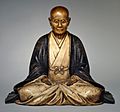Middle class facts for kids
The middle class describes a group of people in society who are not super rich (like old noble families) and not struggling with poverty. They are also different from the "working class," who often do jobs that involve physical labor.
In many countries, like the United States, the middle class makes up a large part of the population. It can be anywhere from 45% to 49% of all households. This group is often seen as the backbone of society.
Contents
What is the Middle Class?
The middle class is a broad group of people. They usually have jobs that require special skills or education. These jobs might include teachers, doctors, engineers, small business owners, or office workers. They earn enough money to live comfortably. This means they can afford things like a home, food, clothes, and sometimes even vacations.
Different Parts of the Middle Class
Not everyone in the middle class earns the same amount of money. Because of this, people often talk about two main parts:
- Lower middle class: These people usually have stable jobs. They earn a good income but might not have a lot of extra money for luxuries. They focus on providing for their families.
- Upper middle class: This group generally earns more money. They often have jobs that require advanced degrees or a lot of experience. They might have more savings and can afford a more comfortable lifestyle.
How We Define Social Classes
The idea of social classes helps us understand how society is organized. It looks at things like:
- Income: How much money a person or family earns.
- Education: The level of schooling someone has completed.
- Occupation: The type of job a person does.
- Wealth: The total value of what someone owns, like property or savings.
These factors help sociologists (people who study society) figure out where different groups fit in.
The Middle Class in History
The idea of a "middle class" has changed over time. In the past, societies were often divided simply into the very rich (nobles) and the poor (peasants). As countries developed, new jobs appeared. People like merchants, craftspeople, and professionals grew in number. These groups didn't fit into the old categories. They formed a new "middle" group.
In places like Japan during the Edo period, a group called chōnin emerged. These were mainly merchants and artisans. They became a strong middle class, even though they weren't nobles. They played a big role in the economy and culture of their time.
Different Views on Class
Some thinkers have different ideas about social classes. For example, Karl Marx had a specific view. He saw society mainly divided into two groups:
- The ruling class: These are the people who own the factories and businesses.
- The working class (or Proletariat): These are the people who work for wages.
Marx believed the middle class was a smaller group that fit somewhere in between or sometimes sided with one of the other groups. However, most modern ideas about the middle class are broader than Marx's view.
Related pages
Images for kids
-
Sculpture of a chōnin, a middle class of mainly merchants that emerged in Japan during the Edo period. Early 18th century.
See also
 In Spanish: Clase media para niños
In Spanish: Clase media para niños


